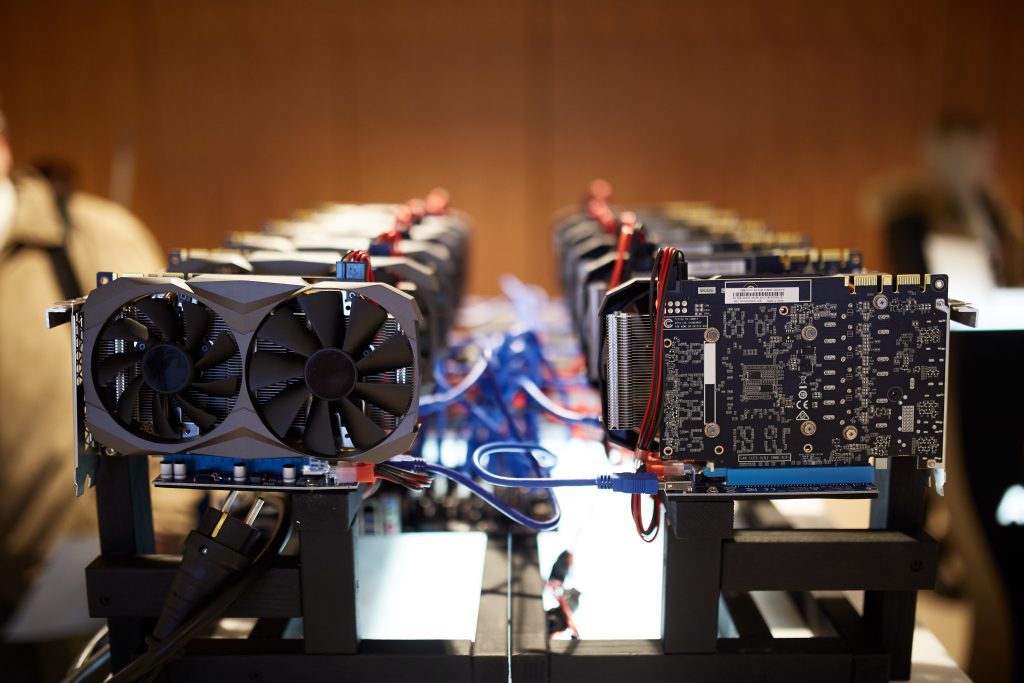Welcome, play-to-earn enthusiasts and NFT gamers! If you’ve ever dabbled in the world of cryptocurrencies, you’ve likely heard the term “Proof of Work” (PoW) being thrown around. But what exactly is Proof of Work, and why is it so important in the blockchain universe? In this comprehensive guide, we’ll dive deep into the concept of PoW, its significance in cryptocurrencies, and how it keeps blockchain networks safe and secure. So, buckle up and get ready to explore the fascinating world of PoW, its history, advantages, disadvantages, and its potential future in the crypto realm.
Exploring Proof of Work


To put it simply, Proof of Work is a consensus mechanism used in blockchain networks to validate transactions and prevent double-spending. Think of it as a cryptographic puzzle that miners must solve to add new blocks to the blockchain. These puzzles are intentionally complex, requiring considerable computational power and time to solve.
The primary purpose of PoW is to secure the blockchain network from malicious attacks, such as the infamous “51% attack,” where an entity gains control over the majority of the network’s hashing power. By making it difficult and resource-intensive to create new blocks, PoW deters bad actors from attempting to manipulate the blockchain.
In a PoW-based blockchain, miners compete to solve these cryptographic puzzles. The first miner to find the solution gets to add the new block to the blockchain and is rewarded with newly minted cryptocurrency (like Bitcoin) and transaction fees. This process not only validates and secures transactions, but it also serves to create new coins, contributing to the overall supply of the cryptocurrency.
Now that we have a general understanding of what Proof of Work is and its role in securing blockchain networks, let’s dive deeper into its history and how it has evolved over time.
Tracing the Roots: The History of Proof of Work
Proof of Work has its roots well before cryptocurrencies entered the scene. The concept was first introduced in 1993 by Cynthia Dwork and Moni Naor in a paper titled “Pricing via Processing or Combatting Junk Mail.” The idea was to deter spam emails by requiring senders to perform computational work before sending a message. This would increase the cost of sending massive amounts of spam, making it economically unfeasible for spammers.
Later in 1997, Adam Back proposed Hashcash, a PoW system designed to limit email spam and denial-of-service attacks. Hashcash required users to generate a hash value by iterating through various nonce values to find a hash that met a specific target. While Hashcash was not widely adopted, it served as an inspiration for the PoW implementation in Bitcoin.
Fast forward to 2008, when the anonymous creator of Bitcoin, Satoshi Nakamoto, published the now-famous Bitcoin whitepaper. Satoshi’s vision incorporated the concept of Proof of Work as a cornerstone of the cryptocurrency’s consensus mechanism, providing the foundation for the first decentralized digital currency.
PoW and Bitcoin: A Perfect Match


Bitcoin’s implementation of Proof of Work has proven to be a match made in crypto heaven. By utilizing PoW as its consensus mechanism, Bitcoin ensures its network remains decentralized and secure.
In the Bitcoin network, miners play a crucial role in the PoW process. They use powerful computer hardware to solve complex mathematical problems, racing against each other to find a solution. Once a miner discovers the solution, they can add a new block of transactions to the blockchain, receiving newly minted Bitcoins and transaction fees as a reward.
This mining process serves several purposes. First, it maintains the network’s security by making it difficult for an attacker to rewrite the blockchain’s history. The more miners participate, the more secure the network becomes. Second, it prevents centralization by distributing the process of adding new blocks among the network’s participants. Finally, mining creates new Bitcoins, contributing to the overall supply and providing an incentive for miners to participate in securing the network.
PoW’s implementation in Bitcoin has been so successful that it has become the gold standard for many other cryptocurrencies, solidifying its place in the history of blockchain technology.
The Upside: Advantages of Proof of Work
Proof of Work offers several advantages that have contributed to its widespread adoption in the world of cryptocurrencies:
- Robust Security: PoW networks are exceptionally secure due to the high computational power needed to attack them. This makes it difficult for bad actors to gain control of the network and manipulate the blockchain.
- Proven Track Record: PoW has stood the test of time, with Bitcoin being a prime example of its success. Since its inception in 2009, Bitcoin’s PoW-based network has not been successfully attacked, demonstrating the reliability of the mechanism.
- Decentralization: PoW consensus algorithms encourage decentralization by incentivizing miners to contribute their computing power to the network. This helps prevent centralization and ensures that no single entity can control the network.
The Flipside: Disadvantages and Criticisms of Proof of Work
Despite its numerous advantages, Proof of Work also faces some criticisms and drawbacks:
- Energy Consumption: PoW networks require vast amounts of energy to maintain their security. The mining process consumes significant amounts of electricity, leading to concerns about its environmental impact and sustainability.
- Centralization Risks: While PoW promotes decentralization, the emergence of large mining pools can lead to a concentration of power. This centralization can pose risks to the network’s security and contradict the core principles of cryptocurrencies.
- Barriers to Entry: The high costs associated with mining equipment and electricity can make it difficult for new miners to enter the market. This might reduce competition and further contribute to the centralization of mining power.
Proof of Work vs. Proof of Stake: A Comparative Analysis


Proof of Work and Proof of Stake are two popular consensus mechanisms used in blockchain networks. Here’s a comparison of their key differences:
| Proof of Work | Proof of Stake | |
|---|---|---|
| Security | High level of security due to computational power required for attacks | Security depends on the amount of cryptocurrency held by validators |
| Decentralization | Encourages decentralization by incentivizing miners | Decentralization can be limited by the distribution of cryptocurrency holdings |
| Energy Consumption | High energy consumption due to mining process | Lower energy consumption as validators are chosen based on their stake |
| Incentives | Miners are rewarded with new coins and transaction fees | Validators are rewarded with transaction fees and sometimes with new coins |
While Proof of Work has been the predominant consensus mechanism for cryptocurrencies, Proof of Stake is gaining popularity as a more energy-efficient alternative. The choice between the two depends on the priorities and goals of the individual blockchain network.
Showcasing PoW in Action: List of Crypto Using Proof of Work
Proof of Work is widely used in the cryptocurrency industry. Here are some notable examples of cryptocurrencies that use PoW as their consensus mechanism:
- Bitcoin (BTC)
- Ethereum (ETH) – currently transitioned to Proof of Stake
- Litecoin (LTC)
- Monero (XMR)
- Zcash (ZEC)
- Bitcoin Cash (BCH)
- Ethereum Classic (ETC)
These cryptocurrencies showcase the versatility and adaptability of the PoW mechanism in securing various blockchain networks.
Gazing into the Crystal Ball: The Future of Proof of Work


As the cryptocurrency landscape evolves, the future of Proof of Work remains uncertain. Technological advancements and increasing awareness of environmental issues could lead to the development of more energy-efficient PoW algorithms. Additionally, the shift towards greener energy sources may help mitigate the environmental concerns associated with PoW.
However, the rise of alternative consensus mechanisms, like Proof of Stake, may challenge the dominance of PoW in the industry. While it’s hard to predict which consensus mechanism will prevail, it’s clear that the ongoing development of blockchain technology will continue to push the boundaries of innovation and reshape the future of cryptocurrencies.
The Bottom Line
Proof of Work has played a pivotal role in the world of cryptocurrencies, providing robust security and fostering decentralization in blockchain networks. As we’ve explored in this article, PoW has its roots in history, benefits, and drawbacks. Its impact on the industry is undeniable, and its future remains an exciting subject of discussion.
As you delve deeper into the world of blockchain and cryptocurrencies, remember that understanding key concepts like Proof of Work is essential to grasping the bigger picture. Keep exploring, keep learning, and keep engaging with this fascinating and ever-evolving technology.









